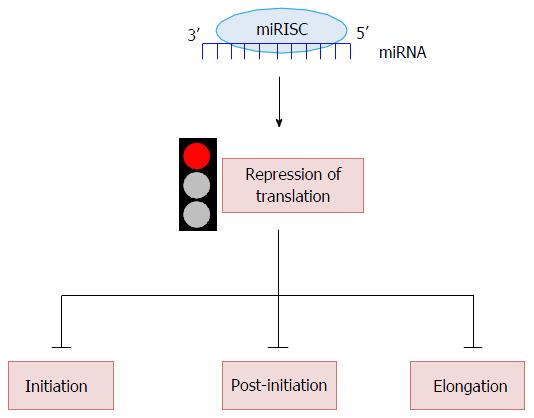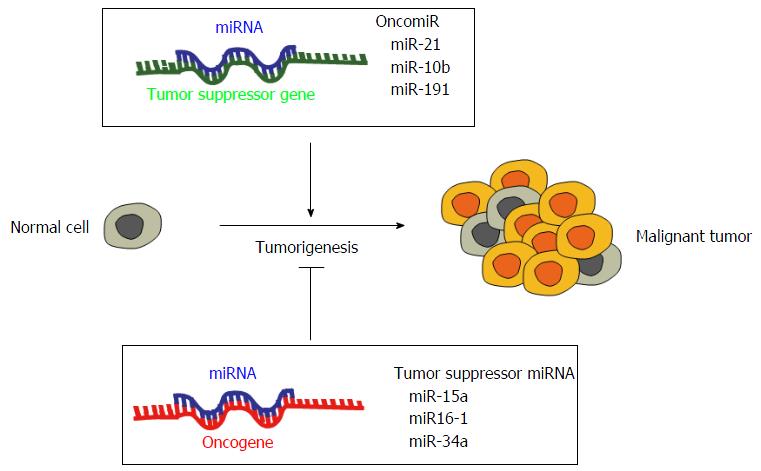Copyright
©The Author(s) 2017.
World J Biol Chem. Feb 26, 2017; 8(1): 45-56
Published online Feb 26, 2017. doi: 10.4331/wjbc.v8.i1.45
Published online Feb 26, 2017. doi: 10.4331/wjbc.v8.i1.45
Figure 1 Mechanisms of action of microRNAs.
A: miRNAs bind the 3’UTR of a target gene by base pairing. The binding between the miRNA seed sequence (nucleotides 2-8 at the 5’end of the miRNA sequence) and the miRNA regulatory element (MRE) at the 3’UTR of a target gene determines the specific type of regulation; B: miRNAs act as inhibitors of translation when the binding at the 3’UTR of target genes is only partially complementary. Instead, when the binding complementarity is perfect, miRNAs induce mRNA degradation; C: miRNAs can also function in an unconventional manner: Under specific conditions, particularly during quiescence, they can activate translation by binding non canonical sites in the 5’UTR of target genes. ORF: Open reading frames.
Figure 2 Schematic representation of microRNAs role in translation.
miRNAs can inhibit protein synthesis at three different stages of translation: Initiation, the rate limiting step, post initiation and elongation. For details refer to text.
Figure 3 Roles of microRNAs in cancer.
miRNAs suppress the expression of their target genes. An oncogenic miRNA, termed oncomiR, can repress the translation of a tumor suppressor gene, stimulating tumorigenesis and leading to tumor formation. Conversely, a tumor suppressor miRNA is able to inhibit the expression of oncogenes, blocking the tumorigenesis process and consequently the development of cancer.
- Citation: Oliveto S, Mancino M, Manfrini N, Biffo S. Role of microRNAs in translation regulation and cancer. World J Biol Chem 2017; 8(1): 45-56
- URL: https://www.wjgnet.com/1949-8454/full/v8/i1/45.htm
- DOI: https://dx.doi.org/10.4331/wjbc.v8.i1.45











